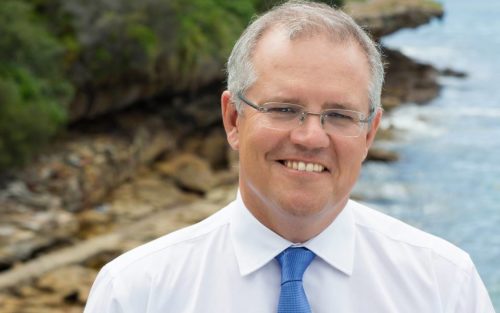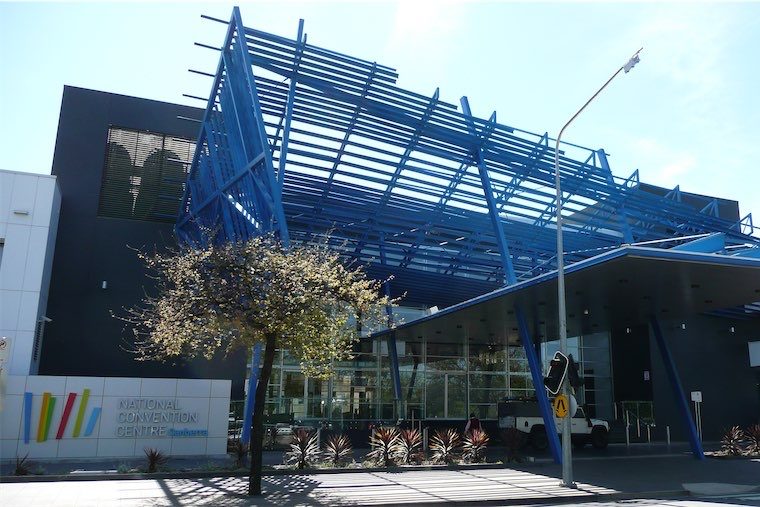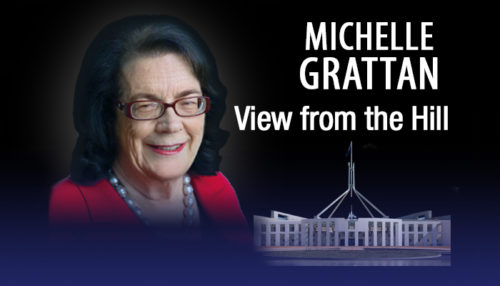
The prime minister will give details of the government’s major overhaul of the assessment process, saying that until recently Closing the Gap was never a partnership with indigenous people, writes political columnist MICHELLE GRATTAN.
SCOTT Morrison is expected to warn against adopting a “deficit mindset” towards progress on indigenous disadvantage, when today (February 12) he presents the twelfth “Closing the Gap” report, which shows disappointing results on key targets.
The prime minister will give details of the government’s major overhaul of the assessment process, saying that until recently Closing the Gap was never a partnership with indigenous people. “We believed we knew better – we don’t,” he will say.
Among the current seven targets, those not met or not on track are for child mortality, school attendance, literacy and numeracy (where there is improvement), employment (which is stable), and life expectancy.
Those “on track” are in the areas of childhood education and year 12 attainment.
Morrison will say “we must see the gap from the viewpoint of Indigenous Australians before we can hope to close it”.
He says, in a draft of his speech, “the targets don’t celebrate the strengths, achievements and aspirations of indigenous people. They don’t tell you what’s happening on the ground or stirring under it.
“They don’t tell you how realistic or achievable these targets were in the first place. They reinforce the language of failing and falling short and they mask the real progress that has been made.”
Morrison says that on “almost every measure” there has been progress – although not as much as should have been made by now.
The government’s “refreshed” process is billed as aiming to deliver shared responsibility and accountability.
“There remains much more to do and we will do it differently by working together,” Morrison says. “By going from good intentions and sky-high aspirations to local, practical action that’s driven by local leaders and local needs with clear accountability and responsibility and a clear line of sight to the community.”
The federal government and the Coalition of Peaks (a group of about 50 community-controlled peak organisations) are working together with the states and territories to produce a new national agreement on Closing the Gap. This is to set out shared priorities for the next decade.
The structure and targets of the revamped scheme are to be finalised in April and then will go to the Council of Australian Governments.
It is planned to have some 15 targets, with a more specific and measurable path to them. The Closing the Gap program was started by the Rudd government.
The results from the latest report are:
Child Mortality – Target: Halve the gap in mortality rates for indigenous children under five within a decade (by 2018) – Not met.
- in 2018, the indigenous child mortality rate was 141 per 100,000 —twice the rate for non-indigenous children (67 per 100,000)
- since the 2008 target baseline, the indigenous child mortality rate has improved slightly, by about 7 per cent. But the mortality rate for non-indigenous children has improved at a faster rate and so the gap has widened.
Early Childhood Education – Target: 95 per cent of all indigenous four-year-olds enrolled in early childhood education (by 2025) – On track.
- in 2018, 86.4 per cent of indigenous four-year-olds were enrolled in early childhood education compared with 91.3 per cent of non-Indigenous children
- between 2016 and 2018, the proportion of indigenous children enrolled in early childhood education increased by almost 10 percentage points. There was a slight decline of less than one percentage point for non-indigenous children
- the attendance rate for indigenous children was highest in inner-regional areas (96.6 per cent), almost 17 percentage points higher than the lowest attendance rate in very remote areas (79.7 per cent).
School Attendance – Target: Close the gap between indigenous and non-indigenous school attendance within five years (by 2018) – Not met.
- the majority of indigenous students attended school for an average of just over four days a week in 2019. These students mostly lived in major cities and regional areas
- school attendance rates for Indigenous students have not improved over the past five years. Attendance rates for indigenous students remain lower than for non-indigenous students (around 82 per cent compared to 92 per cent in 2019)
- gaps in attendance are evident for indigenous children as a group from the first year of schooling, and the gap widens during secondary school. In 2019, the attendance rate for indigenous primary school students was 85 per cent -— a gap of about nine percentage points. By Year 10, indigenous students attend school 72 per cent of the time on average — a gap of about 17 percentage points.
Literacy and Numeracy – Target: Halve the gap for indigenous children in reading, writing and numeracy within a decade (by 2018) – Not met but improvements.
- at the national level, the share of indigenous students at or above national minimum standards in reading and numeracy has improved over the decade to 2018. The gap has narrowed across all year levels by between three and 11 percentage points
- despite these improvements, in 2018 about one in four Indigenous students in years 5, 7 and 9, and one in five in year 3, remained below national minimum standards in reading. Between 17 to 19 per cent of indigenous students were below the national minimum standards in numeracy
- between 2008 and 2018, the share of year 3 students exceeding national minimum standards in reading increased by about 20 percentage points.
Year 12 Attainment – Target: Halve the gap for indigenous Australians aged 20–24 in Year 12 attainment or equivalent attainment rates (by 2020) – On track.
- in 2018–19, 66 per cent of indigenous Australians aged 20–24 had attained year 12 or equivalent
- between 2008 and 2018–19, the proportion of indigenous Australians aged 20–24 attaining year 12 or equivalent increased by 21 percentage points. The gap has narrowed by 15 percentage points, as non-Indigenous attainment rates have improved at a slower pace
- the biggest improvement in year 12 attainment rates was in major cities, where the gap narrowed by 20 percentage points — from 26 percentage points in 2012–13 to six percentage points in 2018–19.
Employment – Target: Halve the gap in employment outcomes between indigenous and non-indigenous Australians within a decade (by 2018) – Not met (stable).
- in 2018, the indigenous employment rate was 49 per cent compared to 75 per cent for non-indigenous Australians
- over the decade 2008–2018, the employment rate for Indigenous Australians increased slightly (by 0.9 percentage points), while for non-Indigenous Australians it fell by 0.4 percentage points. Thus the gap has not changed much
- the indigenous employment rate varied by remoteness. Major cities had the highest employment rate at 59 per cent, compared to 35 per cent in very remote areas. The gap in employment outcomes was widest in remote and very remote Australia.
Life Expectancy – Target: Close the life expectancy gap within a generation (by 2031) – Not on track.
- in 2015–2017, life expectancy at birth was 71.6 years for Indigenous males (8.6 years less than non-indigenous males) and 75.6 years for Indigenous females (7.8 years less than non-indigenous females)
- over 2006 to 2018, there was an improvement of almost 10 per cent in indigenous age-standardised mortality rates. But non-indigenous mortality rates improved at a similar rate, so the gap has not narrowed
- since 2006, there has been an improvement in indigenous mortality rates from circulatory disease (heart disease, stroke and hypertension). But this has coincided with an increase in cancer mortality rates, where the gap is widening.
Meanwhile, in response to some disquiet in the Coalition party room on Tuesday, Morrison gave an assurance that it would be consulted on the design and timing of the proposed referendum for indigenous recognition the government aims to run this term.
Michelle Grattan is a professorial fellow at the University of Canberra. This article was originally published on The Conversation. ![]()
Who can be trusted?
In a world of spin and confusion, there’s never been a more important time to support independent journalism in Canberra.
If you trust our work online and want to enforce the power of independent voices, I invite you to make a small contribution.
Every dollar of support is invested back into our journalism to help keep citynews.com.au strong and free.
Thank you,
Ian Meikle, editor




Leave a Reply